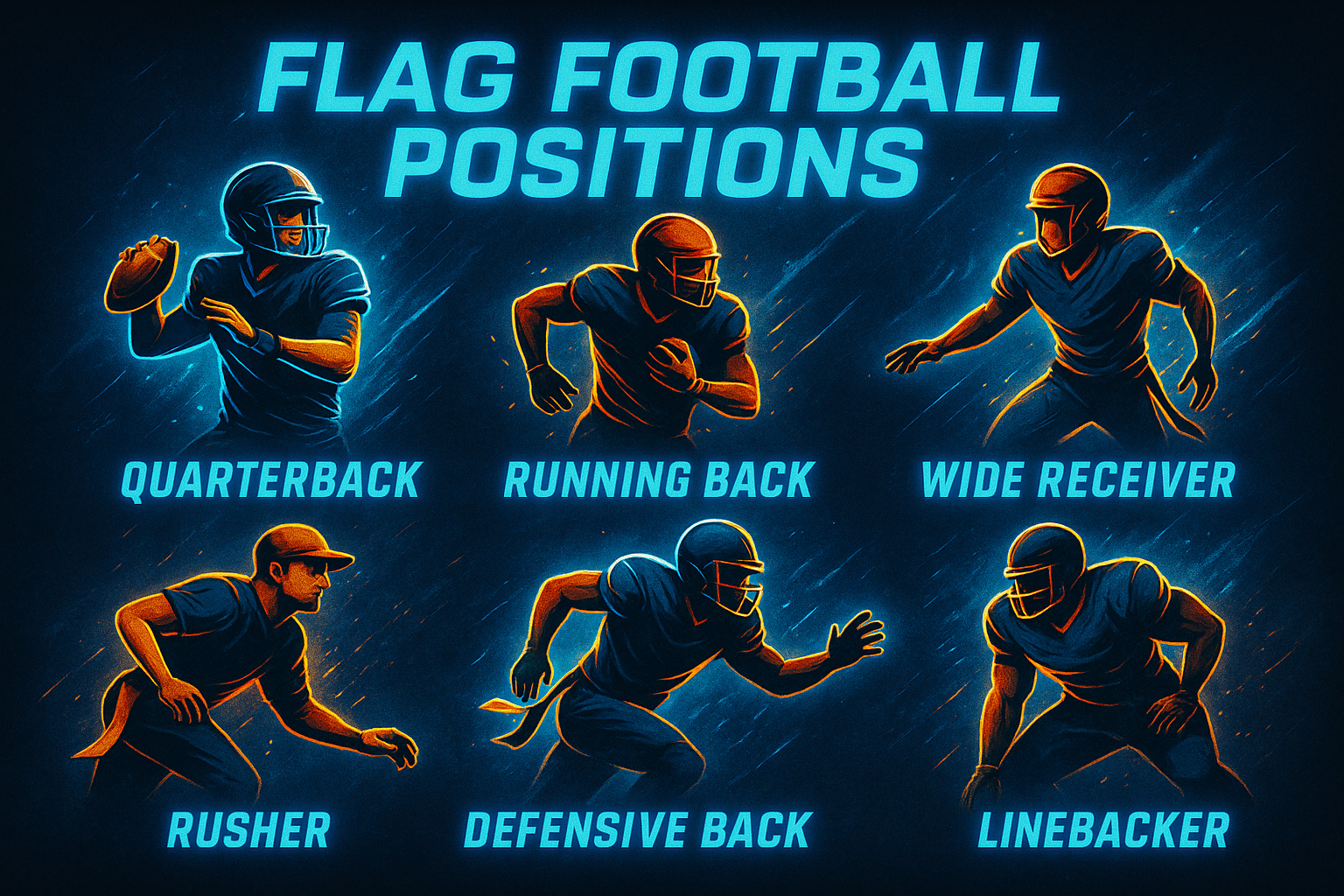
Flag Football Source is pleased to offer insight for newcomers and those unfamiliar with the sport, highlighting how flag football differs from traditional tackle football. While the core spirit of the game remains intact, the structure and player roles vary significantly-providing a unique, accessible, and engaging experience for athletes of all skill levels.
Offensive Positions
1. Quarterback (QB)
Just like in tackle football, the quarterback is the leader of the offense, responsible for calling plays, taking the snap, and either passing or handing off the ball.
Difference: In flag football, quarterbacks often have less time and space, as blocking is limited or not allowed, forcing quicker decision-making and more passing.
2. Running Back (RB)
Running backs can take handoffs or serve as short-yardage receivers. They must be agile and quick, making plays in open space.
Difference: Since there's no tackling, success is about evasion rather than breaking through tackles. Some leagues even limit or ban direct runs.
3. Wide Receiver (WR)
Wide receivers run routes to catch passes from the quarterback.
Difference: With smaller fields and fewer defenders, receivers may have more space but must also master quick, sharp route-running in confined areas.
4. Center (C)
The center snaps the ball to the quarterback and may also run routes or serve as a blocker, depending on league rules.
Difference: Unlike tackle football, the center often has fewer blocking responsibilities and may even be a key receiver.
Defensive Positions
1. Rusher
This is a flag football-specific role. The rusher lines up a certain distance from the line of scrimmage (usually 7 yards) and is the only defender allowed to directly rush the quarterback.
Difference: There's no offensive line to block rushers, so speed and angles are crucial for success.
2. Defensive Back (DB)
DBs cover receivers and attempt to intercept or deflect passes, just as in tackle football.
Difference: Without tackling, the emphasis is on positioning, reading routes, and pulling flags at the right moment.
3. Linebacker (LB)
Linebackers often play a hybrid role: watching for short passes, supporting the run defense, and pulling flags.
Difference: With fewer players on the field (typically 5 to 7), linebackers must cover more ground and be versatile.
Key Differences from Tackle Football
- Fewer Players: Most flag football teams play with 5 to 7 players per side instead of 11, leading to more simplified positions and broader roles.
- No Contact: Positions that rely on physicality in tackle football-like linemen-are often eliminated or redefined in flag football.
- More Passing: With limited blocking and smaller fields, offenses often favor quick passes and agile plays over power runs.
- Co-Ed Play and Inclusion: Many leagues are co-ed or inclusive, changing how roles are distributed and emphasizing equal participation.
Final Thoughts
Flag football simplifies the traditional game while preserving its strategic core. The positions are streamlined, making it accessible for newcomers, including youth, Special Olympians, and recreational athletes. As flag football gains popularity globally-and prepares for its Olympic debut in 2028-it continues to evolve as a sport where everyone can find a position and a place to play.